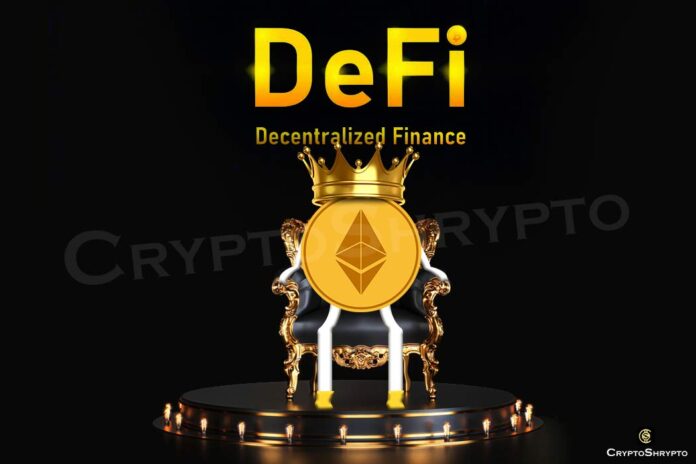Of all the modern cryptocurrencies currently existing, Bitcoin can be considered one of the most prominent one. Years of research on cryptography and computer technology led to the creation of Bitcoin in the year 2009. One has endured the test of time and has climbed to the number two cryptocurrency by market capitalization among the several that followed Bitcoin in the early days of crypto. Ethereum is the name of the cryptocurrency.
In terms of capabilities, Ethereum moves way ahead if it is compared with Bitcoin, and the code was encrypted in such a way that it made it easier to update and change over time. Ethereum (ETH) permits the use of “smart contracts,” or computer code-based self-executing instructions. Because the code is unbiased to both sides, Ethereum was able to make deals between parties that did not need to establish a trust bond before connecting. Decentralized finance (DeFi) emerged as a consequence of this.
DeFi helps users to purchase and sell crypto easily, swiftly, and in a manner that is settled due to the actions of programmed code. It also helps users to borrow, lend, trade and make transactions, and the best part is that it does not require any permission from external authorities.
The event was named “DeFi Summer” and took place during the summer of 2020. During that time, a variety of decentralised finance (DeFi) cryptocurrency projects grew in popularity, but none of them matched Ethereum. Ethereum has generated a massive ecosystem of asset management systems, decentralised exchanges (DEXs), asset tokenization, decentralised autonomous organisations (DAOs), stablecoins, insurance, and so on.
As time goes on, just like Ethereum from Bitcoin, other chains also develop. In a current state, Ethereum has its own merits as well as demerits, and obvious room for improvement. This is the moment where other blockchains burst onto the scene. Crypto coins like Solana, Polkadot, Algorand, Dogecoin, and lots of other coins have started covering the Ethereum space. Now the question arises: Can Ethereum still remain the undisputed “King of Defi” in the upcoming years?
That is the million dollar question that this research aims to answer. This article will demonstrate why Bitcoin, after being the mother of all cryptocurrencies, is still unable to accomplish DeFi on the same scale as Ethereum. We’ll also explore some of the biggest competitors in the field, including Solana, Polkadot, and Algorand. By diving into their details, we may study each of these alternate Defi ecosystems’ strengths and flaws and how each one presents a potential danger to DeFi’s crown in the short, medium, and long term.
In 2021, Ethereum had extraordinary growth, hitting 800,000 daily active users in November. It offers real-world applications with a total value locked in of over $150 billion across all DeFi blockchain applications by 2021. Lending, derivatives, asset management, stablecoins, trading, and insurance are just a few of the services offered by decentralised applications on Ethereum. However, because of the blockchain’s increasing popularity over the last few years, it has become a curse.
The more people who access the network, the more congested this becomes, and the higher transaction prices, often known as “gas fees,” become. These fees are in place to encourage network miners to engage in the network’s proof-of-work consensus mechanism. The change to proof-of-stake and other upgrades in Ethereum’s entire shift to what is known colloquially as Ethereum 2.0 provide such a solution to the congestion and scalability issues. However, setbacks in the various stages of Eth2’s full rollout, as well as the growing popularity of rival smart contract blockchains, could cause Ethereum to lose its crown.
There are a slew of blockchain protocols vying for the top spot in the cryptocurrency rankings. Only a few have exhibited impressive adoption, popularity, and real-world use applications in recent years, and they are now drawing the interest of people in the blockchain industry who would normally gravitate toward Ethereum. Solana, Polkadot, and Algorand are the three blockchains reviewed in Research’s analysis. The history, unique traits, environment, and expanding potential of each method are all discussed in order to see if some of these chains have what it takes to be the “Ethereum Killer.”




